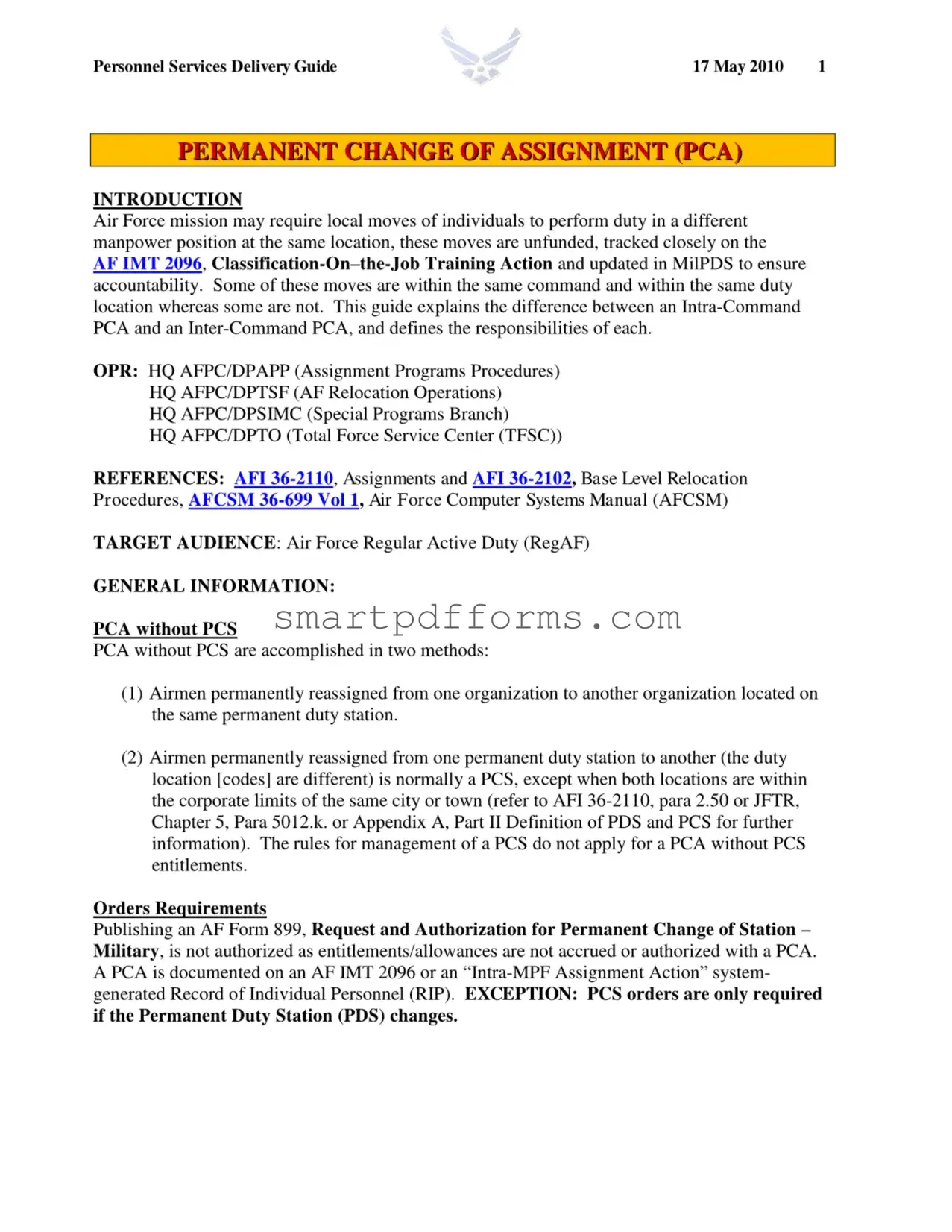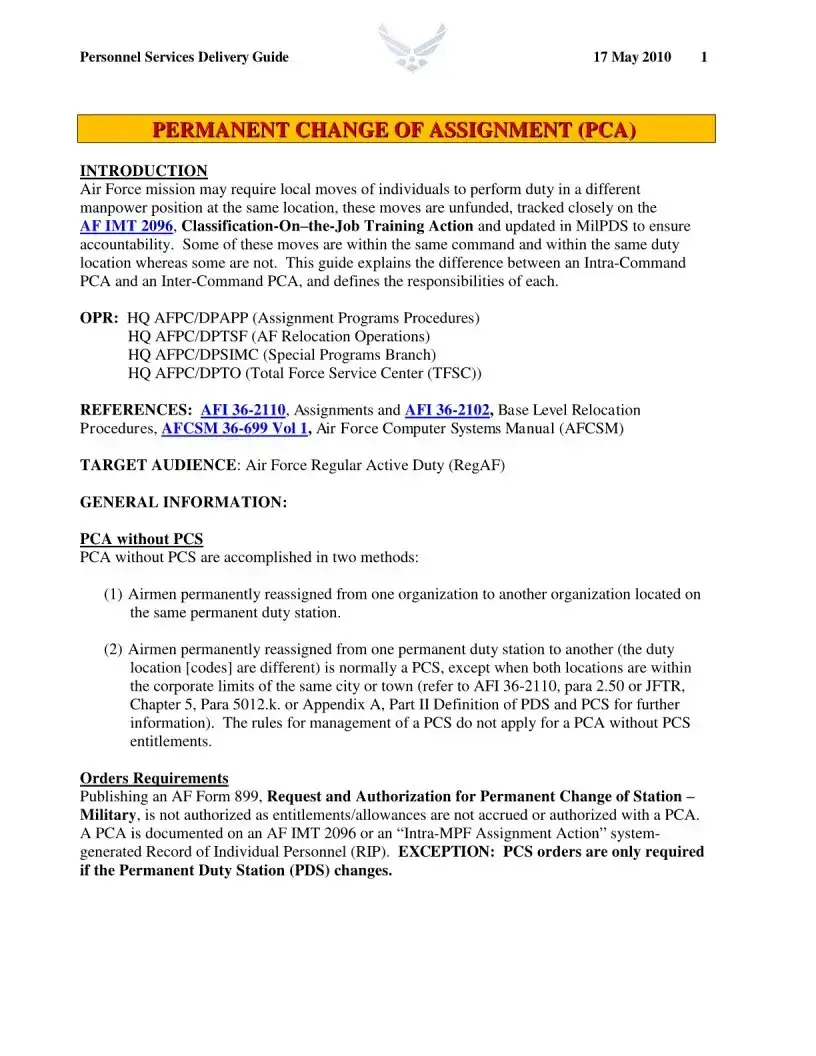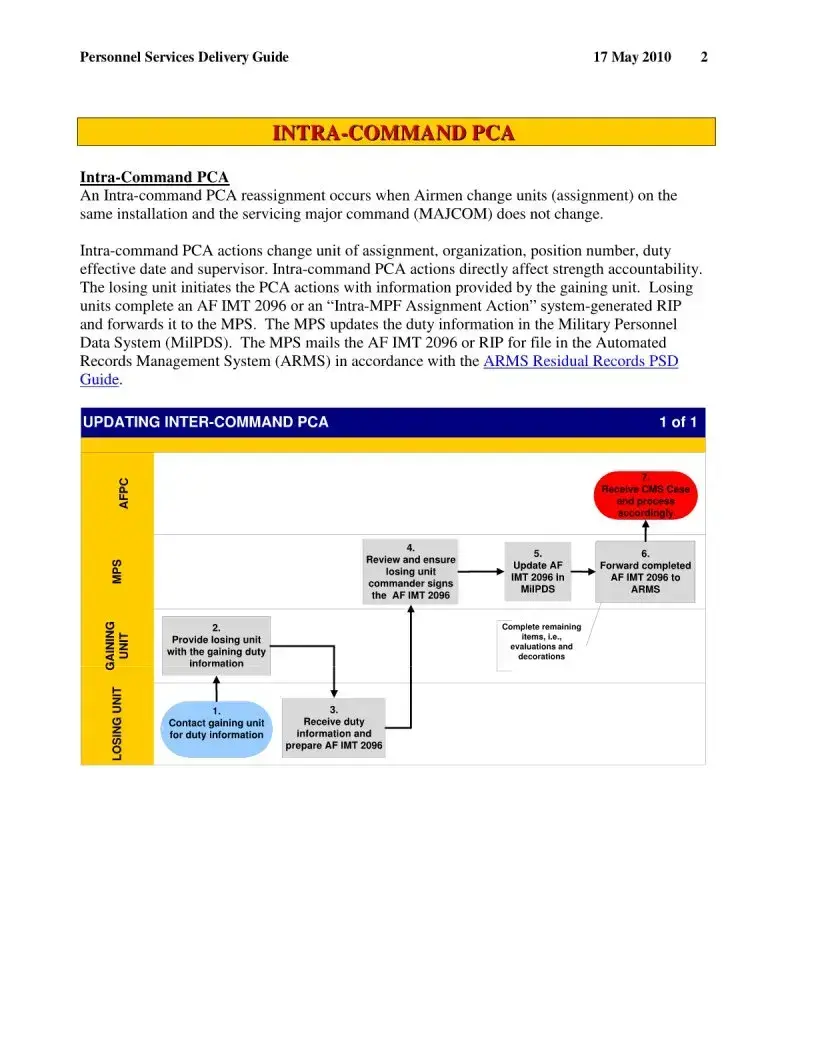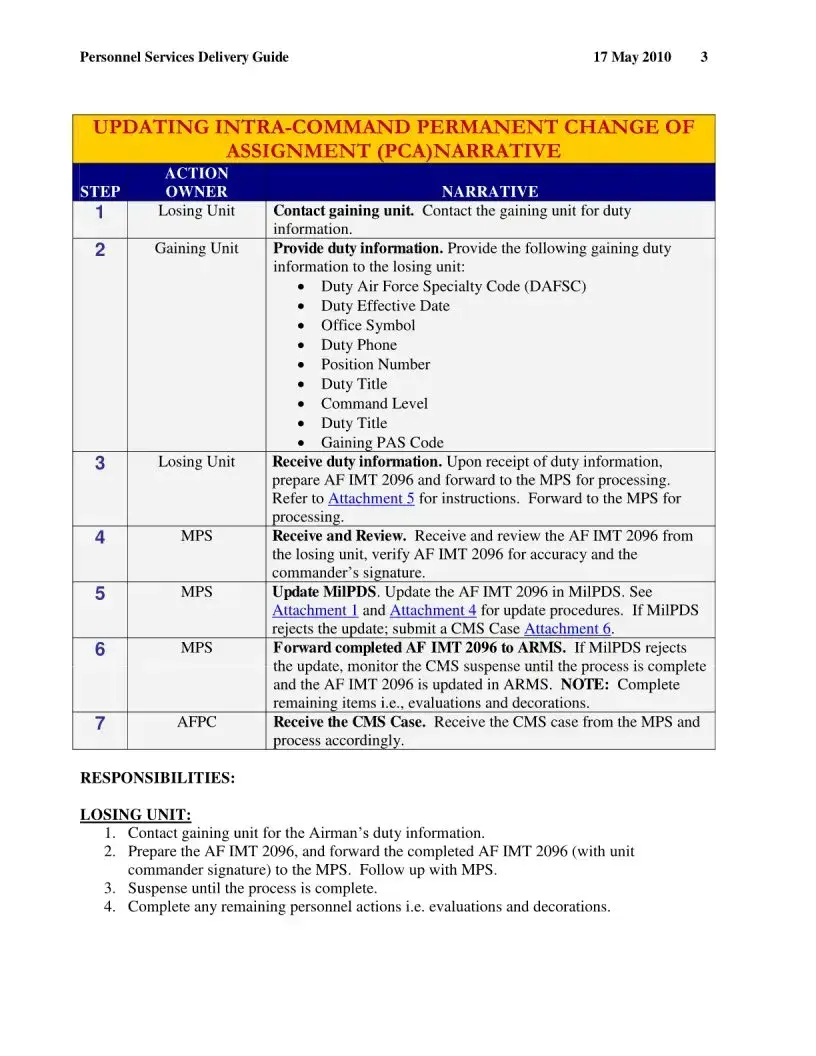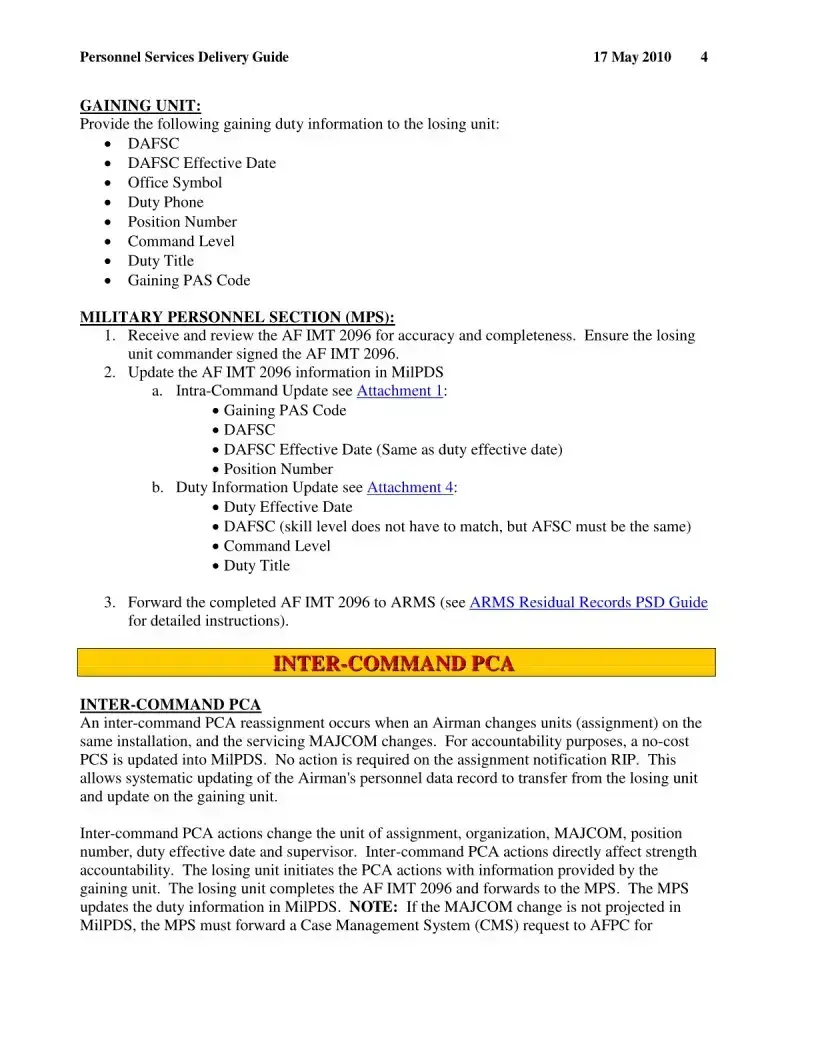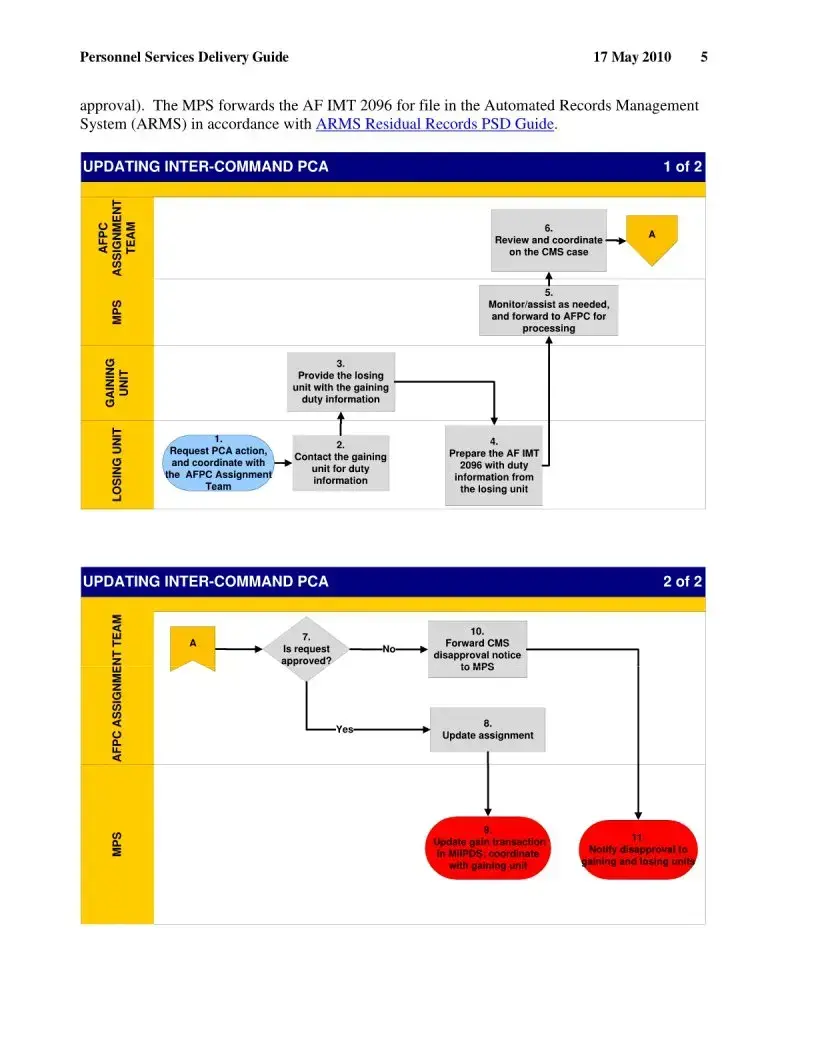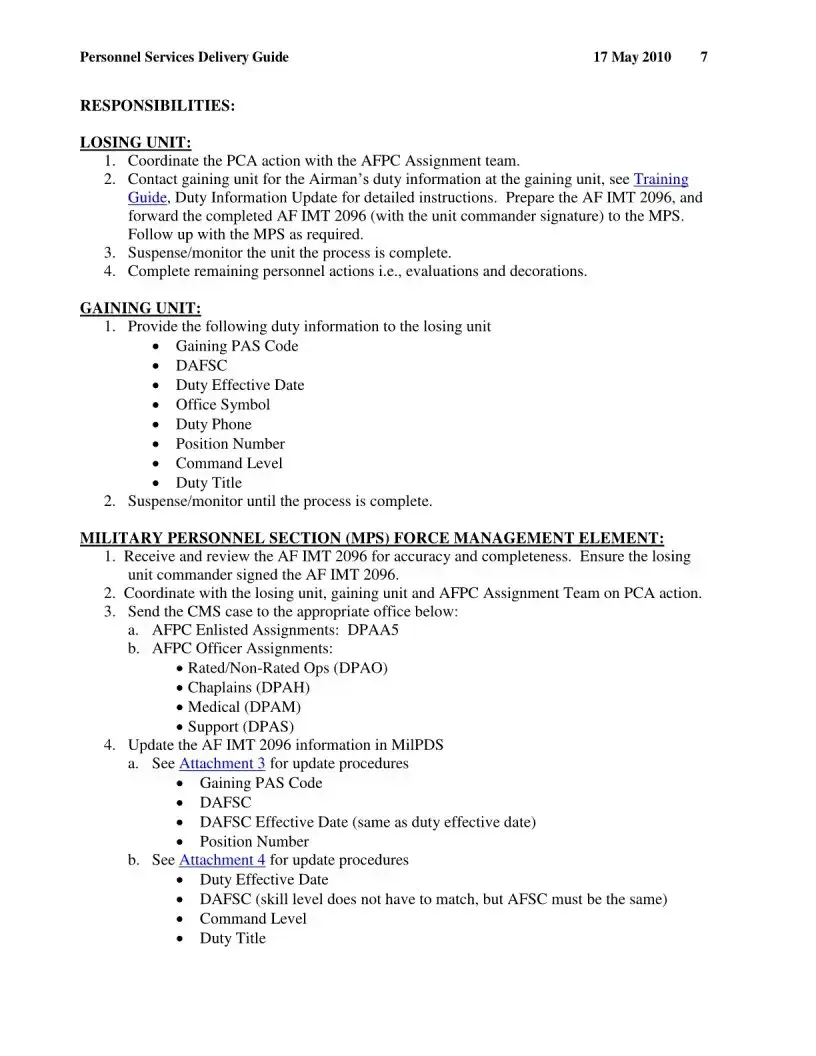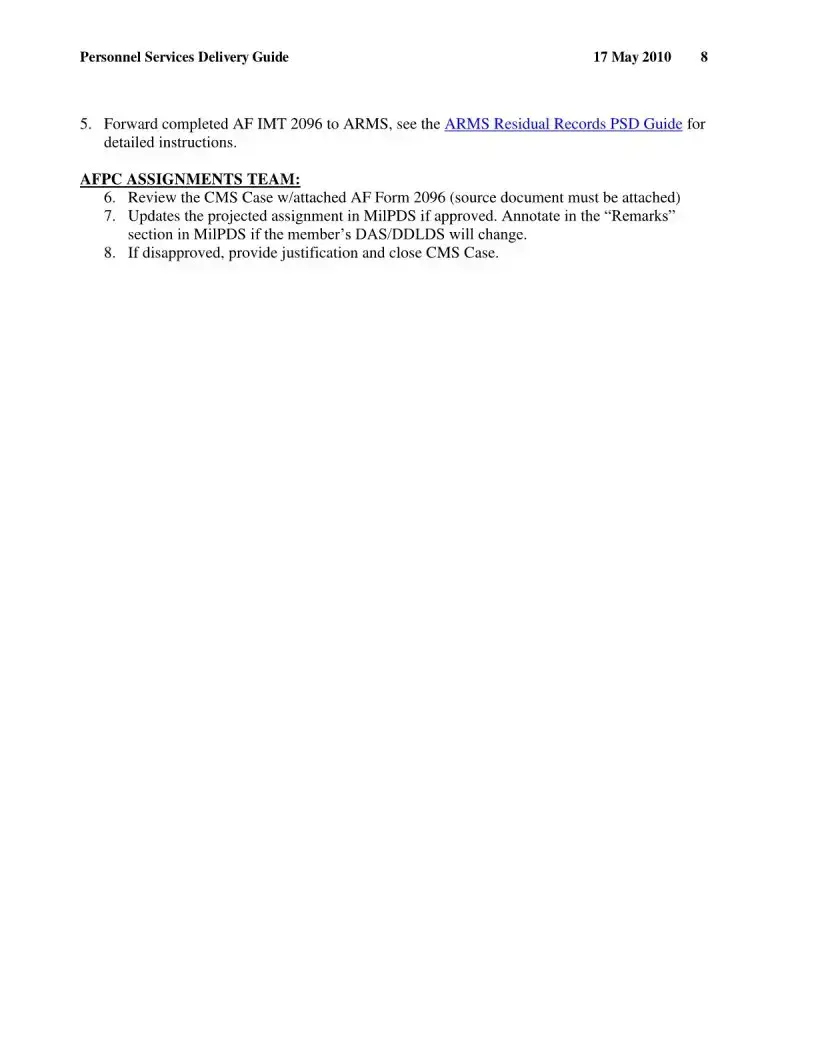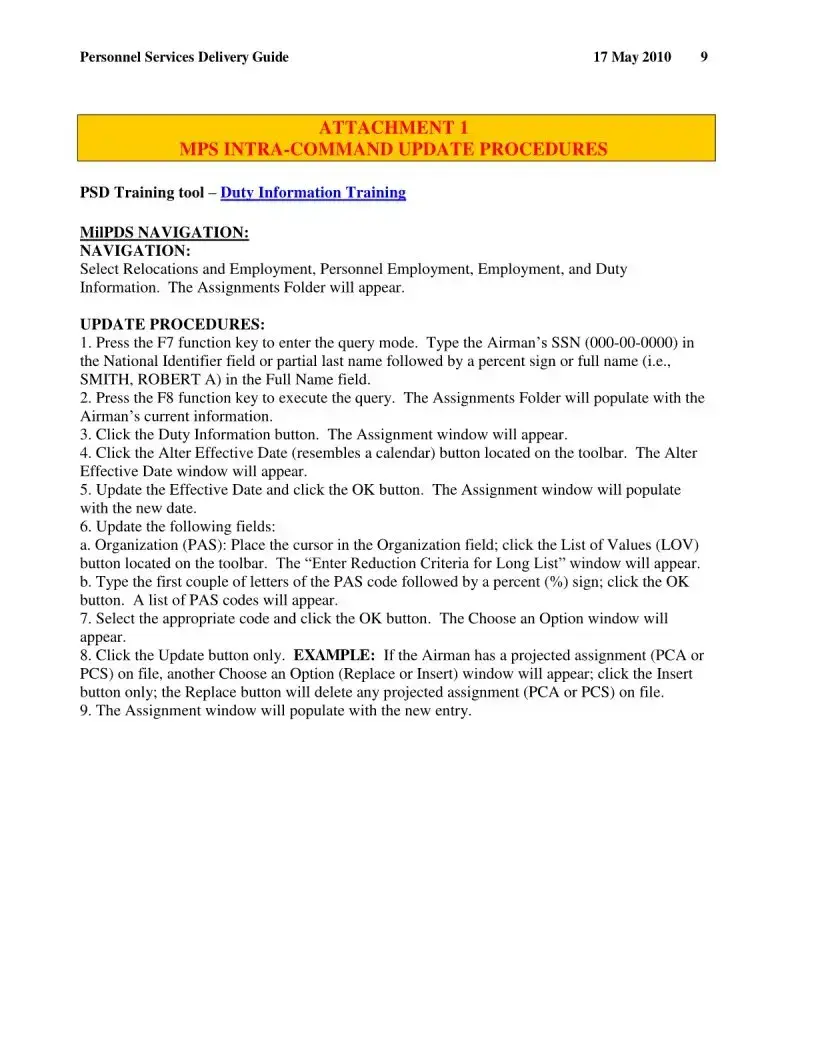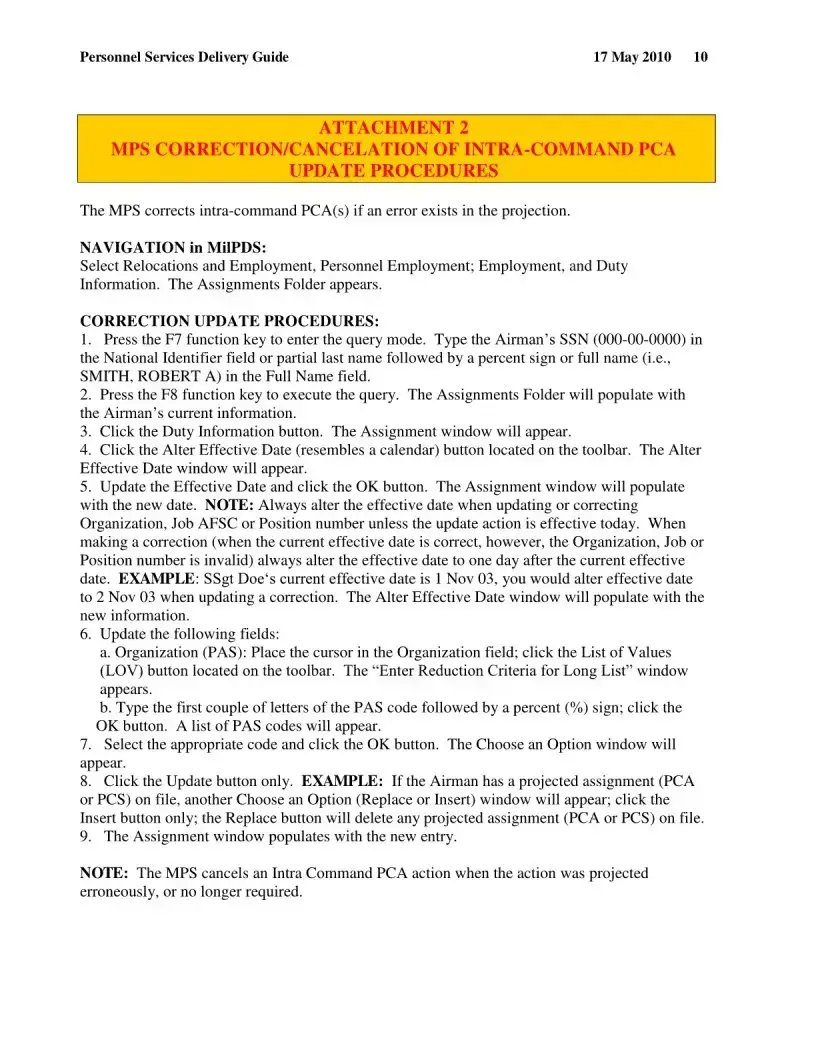In the realm of military assignments, the procedures and requirements for personnel changes can be both detailed and nuanced, particularly for members of the Air Force experiencing a Permanent Change of Assignment (PCA) without a Permanent Change of Station (PCS). The AF 899 form, alongside other documents such as the AF IMT 2096, plays a critical role in these processes. Such moves can be required due to the demands of the Air Force mission, necessitating local reassignments of individuals to different roles within the same location. These reassignments do not usually entail the allowances or entitlements associated with PCS moves, focusing instead on ensuring organizational accountability and strength. The process, documentation, and responsibilities differ significantly between Intra-Command PCAs, where Airmen are reassigned within the same major command and location, and Inter-Command PCAs, which may involve more complex considerations. This guide outlines critical aspects of both types of PCA, emphasizing the procedural steps, from initiating contact between losing and gaining units to the final updates in the Military Personnel Data System (MilPDS). It delineates the roles of various entities involved, including the unit commanders, Military Personnel Sections (MPS), and the Automated Records Management System (ARMS). Through a series of specified actions, the guide ensures that personnel are accurately accounted for in their new assignments while clarifying that traditional PCS orders are not required unless there is a change in the Permanent Duty Station (PDS).
